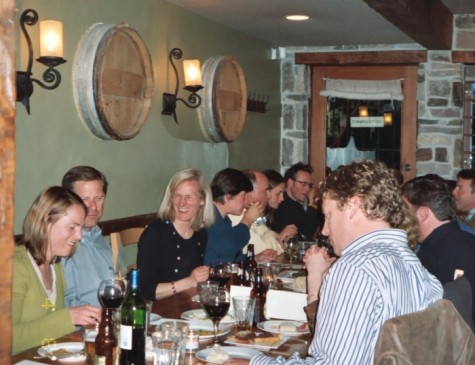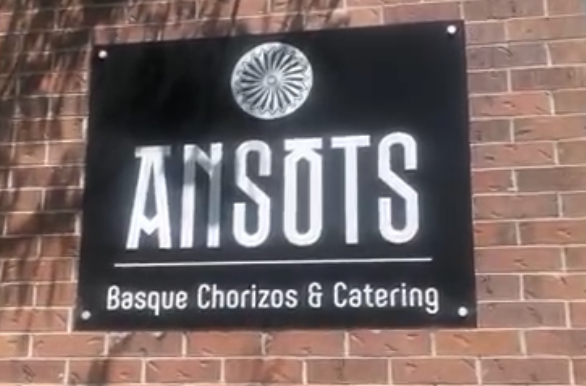What is the Basque Country?
Despite its name, the Basque Country is not a country at all. The Basque Country is a cultural region that overlaps the western side of the border between France and Spain where the Basque people have lived for centuries. Basques refer to their homeland in their own language as Euskal Herria. They are considered the oldest people of Europe and their language, Euskara, has no known connections to any other languages.

The Basque Country does not have official borders. But if you ask Basques what the Basque Country is, they might respond with “Zazpiak Bat” — seven provinces in one. These seven provinces represent the area where the Basque language – Euskara – has been spoken, probably since prehistoric times. But while you can frequently find these seven historic Basque provinces in Basque-produced maps and literature, they are not one single geographic or political entity.
Four of the traditional provinces of the Basque region are in Spain and three are in France. As a result, the citizens of this cultural region hold either French or Spanish citizenship. And the current political boundaries of the region are a complex amalgam of many different parts. In essence, they consist of two regional autonomous communities in Spain, Euskadi and Nafarroa, and in France, three historic Basque provinces that no longer exist and are part of a larger department, Pyrenees Atlantiques, although Basques still commonly make references to the French Basque provinces. In France, it’s referred to as Pays Basque. There are five dialects of Euskara that roughly overlap the boundaries of the provinces.
The main geographic features of Euskal Herria are the coastal region along the Bay of Biscay and the Pyrenees Mountains.
HEGOALDE – the Spanish Basque Country
In the Basque language, the Spanish side is referred to as Hegoalde, or the southern side of the Basque Country. Many sources will refer to Euskadi when speaking of the Basque Country. Euskadi is the name of the officially-recognized Basque Autonomous Community. This is a much smaller entity within the cultural region known as the Basque Country.
Only three Spanish Basque provinces are recognized politically as Euskadi. (Google Maps represents them this way.) Euskadi is separate from the province of Nafarroa (Navarre) which includes many Euskaldunak (Euskara-speaking people).

Euskadi
Created in 1979, Euskadi includes the provinces of Gipuzkoa (Guipuzcoa), Bizkaia (Biscaya) and Araba (Alaba). Euskadi is headed by a regional government located in Vitoria-Gasteiz, Araba and it has its own police force (Ertzaintza) and collects its own taxes. Euskara and Spanish are the official languages of Euskadi.
The first listing in Wikipedia for the Basque Country is defined as Euskadi, then the reader must click on a different entry “Basque Country (Greater Region)” to see the traditional Basque definition. Because Euskadi’s government collects taxes that can be spent locally, a great effort is made to allocate funds to promote the Basque language, culture and traditions. A Basque-language television station EITB and radio stations are supported by the government. Language programs are promoted as well. As a result, much of the preservation and promotion of the Basque culture in modern times can be attributed to Euskadi’s leadership.
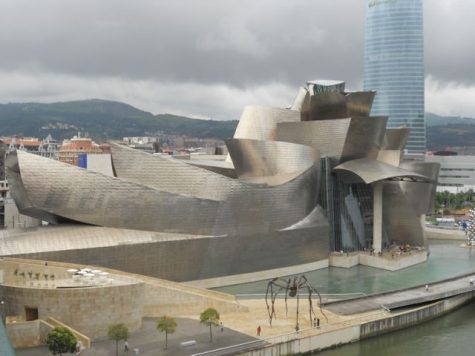
Nafarroa
As part of the movement toward democracy after the death of Dictator Francisco Franco in 1975, Spain was divided into 17 autonomous communities, made up of smaller provinces, of which Euskadi is one. At the time, the people of Nafarroa were given the option to become part of Euskadi, but they voted to be a separate entity. They are also autonomous, with their own government.
Euskara is only spoken in one part of Nafarroa – the northern sector closest to the border with Spain. The rural villages of the province’s northern section are strongly Basque. The very Basque city of Irunea-Pamplona, where the San Fermin festival and the running of the bulls takes place, is the capital of Nafarroa.
However, Nafarroa has historically been a separate politically entity (at one time the Kingdom of Navarre) from the rest of the Spanish Basque region, and in earlier times was much stronger. The province is larger than the other Basque provinces and has much more cultural diversity. In the rural flatlands south of Pamplona, the population lost the Basque language and culture a long time ago. This sector is much more conservative, both politically and socially. All these factors played in to the province’s majority vote against being part of Euskadi and continued refusal to participate in Basque projects.
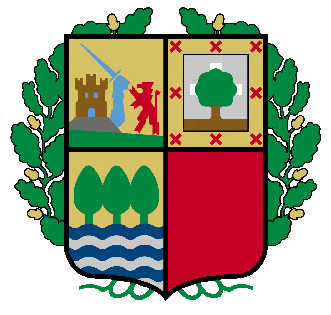
Nevertheless, hope springs eternal, as they say. The Spanish Constitution includes a special allowance for Nafarroa to join Euskadi if it chooses. In fact, the Coat of Arms of Euskadi includes a space for Nafarroa. Created in 1936 and representing the four Spanish Basque provinces (Laurak Bat), the coat of arms included chains symbolizing Nafarroa and was adopted by Euskadi’s government in 1978. A lawsuit by the government of Nafarroa led to the elimination of the chains in 1986, but the fourth representative red sector remains.
La Rioja
La Rioja is an adjacent autonomous community like Euskadi and Nafarroa, but Rioja is also a designated wine-making region along the Ebro River with a distinct appellation. Part of the grape-growing region overlaps the Basque province of Araba — Arabako Errioxa (Rioja Alavesa) and many high-quality wines are produced there. Part of the Rioja region also overlaps Nafarroa (Rioja Oriental).
Important cities of Spanish Basque Country – Hegoalde:
• Donostia (San Sebastian), Gipuzkoa
• Bilbo, Bizkaia
• Vitoria-Gasteiz, Alaba
• Iruñea-Pamplona, Nafarroa
RELATED STORIES FROM EUSKAL KAZETA
The Best Places and Dishes to Eat in the Basque Country
Summer Festivals in the Basque Country
Seven of top 100 Restaurants in the World are Basque
Happy in the Basque Country
Favorite Basque Recipes
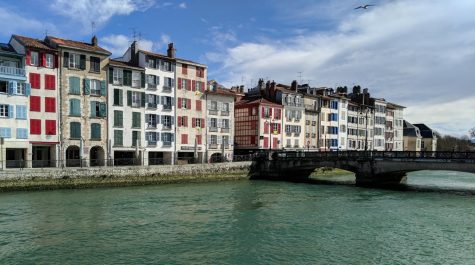
IPARRALDE– The French Basque Country
(Where possible, the Basque language version of place names are used first.)
The French side is called Iparralde, or the north side. The three historic French Basque provinces are Lapurdi (Labourd in English), Behe-Nafarroa (Lower Navarre) and Zuberoa (Soule). However, if you type the names of these provinces into a search on Google Maps, these provinces will not appear. In France, the Basque region is part of the Pyrenees-Atlantiques department, which includes the neighboring Bearn region. France refers to its Basque region or Pays Basque as a “cultural” region.
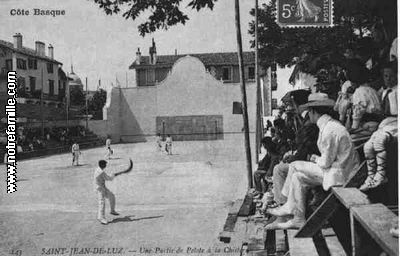
The three French Basque provinces existed officially until the time of the French Revolution (1789), at which time France was divided into departments, similar to U.S. states. Recently, in 2017, a political entity, the Communaute Pay Basque, was created to give the French Basque region a stronger identity and it is headed by a president who is located in the area’s largest city, Baiona (Bayonne).
Important cities of French Basque Country – Iparralde:
• Baiona, Lapurdi
• Biarritz, Lapurdi
• Donibane Lohitzun (St. Jean de Luz), Lapurdi
• Donibane-Garazi (St. Jean Pied de Port), Behe-Nafarroa
• Mauleon-Licharre, Zuberoa

Zazpiak Bat – the seven provinces in one.
Map author Gabriel Trisca, available under Wikipedia license.


